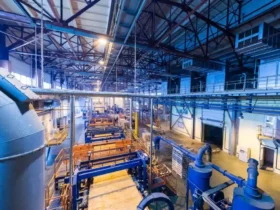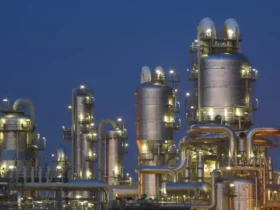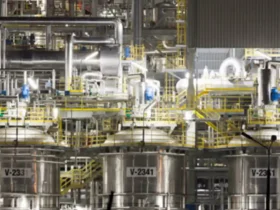
Nanotechnology, the science of manipulating matter at the atomic and molecular scale, is revolutionizing industries across the globe. Among the sectors most significantly impacted is chemical processing, where the integration of nanotechnology is leading to unprecedented efficiencies, innovative materials, and more sustainable practices. This article explores how advances in nanotechnology are shaping the future of chemical processing.
What is Nanotechnology?
Nanotechnology involves working with materials that have dimensions between approximately 1 and 100 nanometers. At this scale, materials exhibit unique physical, chemical, and biological properties. These altered characteristics can be harnessed to improve processes and products across a wide range of chemical applications.
How Nanotechnology is Transforming Chemical Processing
1. Enhanced Catalysis
Catalysts are crucial in speeding up chemical reactions. Traditional catalysts often face limitations in surface area and reactivity. Nanocatalysts, however, have a much higher surface area-to-volume ratio, making them significantly more reactive.
Nanoparticles can also be engineered for specific reactions, allowing for greater selectivity and efficiency. For example, platinum nanoparticles are used in fuel cells and petrochemical refining, drastically reducing energy usage and increasing product yield.
2. Improved Separation and Filtration Techniques
Nanomaterials are being used to create ultra-selective membranes and filters. These nanostructured membranes are more efficient in separating complex mixtures, such as removing impurities from water or segregating valuable chemicals from waste streams.
Nanofiltration systems are increasingly used in the pharmaceutical and food industries, where precise separation is crucial. They also contribute to reducing energy consumption and operational costs.
3. Advanced Sensors and Monitoring Tools
Nano-enabled sensors are providing real-time data on chemical processes with unprecedented accuracy. These sensors can detect minute concentrations of gases, toxins, or process variables that would be difficult to measure with traditional technologies.
In chemical plants, such sensors help optimize processes, monitor safety conditions, and ensure compliance with environmental standards. For instance, carbon nanotube-based sensors are used for detecting toxic gases at extremely low concentrations.
4. Nanostructured Materials for Equipment Durability
Nanocoatings and nanocomposites enhance the durability and corrosion resistance of processing equipment. These materials provide a barrier against harsh chemicals and high temperatures, extending the lifespan of reactors, pipes, and storage vessels.
By improving the resistance of materials, nanotechnology reduces maintenance costs and downtime, leading to more efficient and reliable operations.
5. Green Chemistry and Sustainability
Nanotechnology supports the principles of green chemistry by enabling more efficient reactions that produce less waste. For instance, nano-engineered catalysts often require lower temperatures and pressures, which reduces energy consumption.
Moreover, nanomaterials can be used to design environmentally friendly products, such as biodegradable plastics or non-toxic paints and coatings, reducing the overall environmental footprint of chemical manufacturing.
Challenges in Adopting Nanotechnology in Chemical Processing
Despite its many advantages, the integration of nanotechnology into chemical processing does come with challenges:
1. High Development Costs
Research and development of nanomaterials and technologies can be expensive. Scaling up from laboratory to industrial scale often requires significant investment.
2. Health and Environmental Concerns
There is still much to learn about the long-term effects of nanomaterials on human health and the environment. Ensuring safe handling and disposal of nanoparticles is crucial.
3. Regulatory Hurdles
As nanotechnology is relatively new, regulations are still evolving. Companies must navigate complex compliance landscapes, which can slow down innovation and adoption.
4. Skill Gap
Implementing nanotechnology requires specialized knowledge in chemistry, materials science, and engineering. The current workforce may need additional training and education to effectively work with these new technologies.
Real-World Applications and Case Studies
1. Chemical Manufacturing
Companies like DuPont and BASF are investing heavily in nanotechnology to improve catalysts and materials. For example, DuPont uses nanomaterials to enhance the performance of coatings and polymers, offering superior strength and durability.
2. Water Treatment
Nanotechnology is used to develop advanced membranes that filter out contaminants like heavy metals and pathogens. This is particularly useful in chemical industries that produce wastewater as a byproduct.
3. Energy Sector
Nanomaterials are used in the production of more efficient batteries and fuel cells. In chemical processing plants, these energy-efficient technologies help reduce operational costs and carbon emissions.
The Future of Nanotechnology in Chemical Processing
The potential for nanotechnology in chemical processing is vast and still largely untapped. Future advancements may include:
- Smart Reactors: Reactors that can self-adjust parameters using nano-sensors and AI algorithms.
- Targeted Catalysis: Nanoparticles designed to catalyze only specific reactions, minimizing side products and waste.
- Self-Cleaning Surfaces: Nanocoatings that resist fouling and contamination, reducing cleaning time and chemical usage.
- Advanced Drug Delivery: In the pharmaceutical sector, nanotechnology may enable the precise delivery of chemicals for medical treatments.
Nanotechnology is ushering in a new era in chemical processing. Its ability to enhance reaction rates, improve materials, reduce energy consumption, and support environmental goals makes it a game-changer in the industry.
While challenges remain in cost, safety, and regulation, the long-term benefits of incorporating nanotechnology into chemical processing are too significant to ignore. As research continues and technology becomes more accessible, nanotechnology is set to become a cornerstone of modern chemical engineering, leading to smarter, cleaner, and more efficient industrial practices.







Leave a Reply